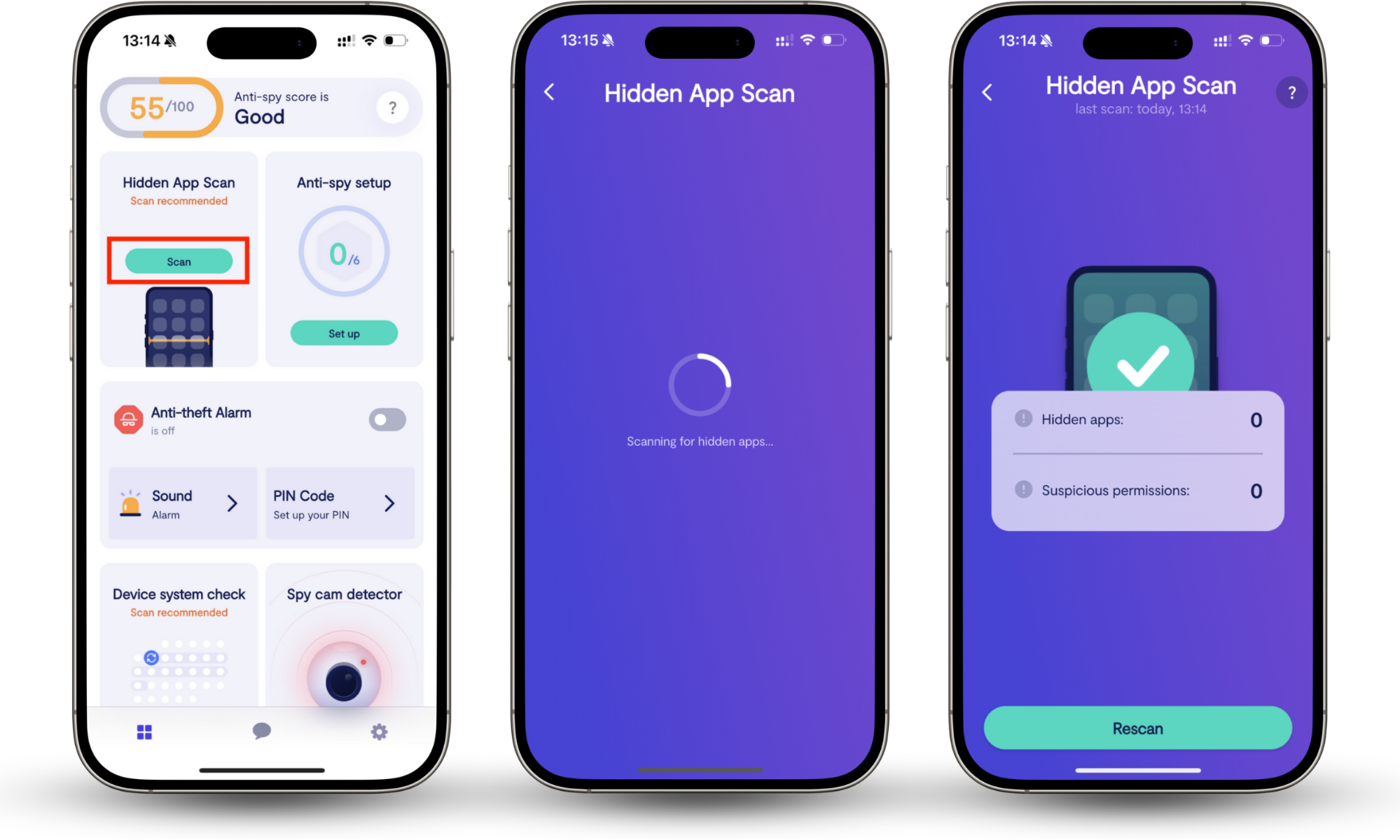Table of contents
- How does PayPal secure users' information?
- End-to-end encryption
- Browser integrity checks
- PayPal security key
- How safe is PayPal for sellers?
- Does PayPal protect the buyer?
- How to make a safe PayPal transaction
- Friends and family
- Goods and services
- PayPal refund policy — how to dispute a charge on PayPal
- PayPal and user privacy
- The risks of using PayPal and how users can protect themselves
- Phishing scams
- Overpayment scams
- Advance-payment scams
- Shipping address scams
- Fake or hacked account scams
- Fake payment scams
- What to do if you’ve been scammed
- Conclusion
How does PayPal secure users' information?
Using a variety of tools and safety measures, PayPal is reputed for securing user information.
As a popular online payment platform, PayPal stores an array of sensitive user data, including login details and financial information.
Here’s how PayPal secures user data:
End-to-end encryption
PayPal uses the industry-standard TLS encryption protocol to protect sensitive information, like passwords and financial information. Any information sent between your device and PayPal’s servers is scrambled and almost impossible for criminals to intercept or read.
Browser integrity checks
PayPal’s browser integrity checks ensure that your browser is fit for sending sensitive data to its servers. Also, PayPal uses the EV (extended validation) SSL certificate, which verifies PayPal’s site to your browser and encrypts the connection.
PayPal security key
Also known as two-factor authentication. The PayPal security key feature requires an additional form of authentication beyond a password, when logging into your account. Usually, it’s a one-time use code sent via SMS to the phone number you used to register your account.
Is Apple Pay safe?
Prefer to make payments with your iPhone? Is Apple Pay safe? Read our guide to find out.
How safe is PayPal for sellers?
PayPal is generally considered safe for sellers, it offers a variety of safety features and protections.
Here’s how PayPal protects sellers:
- Seller Protection. This feature helps sellers avoid financial loss due to fraudulent activity. It covers eligible transactions for sellers against claims, chargebacks, or reversals for unauthorized transactions or items not received.
- Merchant fraud prevention. In case of possible merchant fraud transactions, you can contact PayPal to investigate. They also monitor for fishy transactions 24/7.
- Payment processing. PayPal takes care of payment processing for sellers, ensuring that transactions are secure and promptly received.
Does PayPal protect the buyer?
Yes, PayPal protects buyers with a variety of safety features and protections. They also have specific policies geared towards buyers to prevent scams and fraud.
Here’s how PayPal protects buyers:
- Buyer Protection. If a purchased product doesn’t arrive, does not match the original product description, is defective, or counterfeit, the buyer can file a dispute. After an investigation, PayPal may refund the money.
- Chargeback protection. If a seller doesn’t deliver goods or services as promised, the buyer can perform a chargeback with their card issuer if they used a credit or debit card. Paypal can help by providing information to support the chargeback claim
- Dispute resolution. If a buyer has an issue with a sale, they can file a dispute claim. PayPal will investigate and make a decision based on evidence given by both the buyer and the seller.
How to make a safe PayPal transaction
PayPal is safe for sending and receiving money when used correctly. Besides relying on PayPal’s protection measures and safety features, it’s crucial that you follow best practices to ensure secure transactions.
Here’s how to make a safe PayPal transaction:
- Verify the recipient. Ensure they are a reputed seller, or verify their identity through email, phone, or other ways. Also, communicate with the recipient throughout the process.
- Secure your account. Use strong, hard-to-crack passwords and two-factor authentication so no one can hack your account and steal your personal data or money.
- Avoid transactions over public Wi-Fi. Hackers and snoops can intercept personal data over public Wi-Fi connections, like login credentials or financial info.
Use a credit card: In the event of a dispute, a credit card company can intervene if PayPal won’t issue a refund.
Generally, there are two main types of transactions you can make on PayPal:
Here’s when to use each type to make safe and secure PayPal transactions:
Friends and family
This type of transaction is typically used for sending money to people you know and trust without any additional fees. These transactions don't feature buyer or seller protections, so make sure you really trust the person you are making the transaction with.
Goods and services
This type of transaction is typically used for buying and selling goods and services, with additional fees. These fees pay for buyer and seller protection. In case of fraud, scams, or other complications, these protections can help you get your money back.
Important
When using PayPal, it’s important to know what kind of transaction you’re making. It could help you save money on unnecessary fees, or it could protect you from fraud and scams.
PayPal refund policy — how to dispute a charge on PayPal
You should consider disputing a PayPal transaction if you believe a payment was unauthorized or if you didn’t receive goods or services as promised. PayPal will investigate the claim and make a decision using evidence from both the buyer and seller.
Here’s how to dispute a charge on PayPal:
- Login to your account. Go to the PayPal homepage and enter your login credentials.
- Open a dispute. Click on your profile icon on the top-left corner of the screen, and choose Help > Resolution Center > Report a problem. Open a dispute for the transaction in question.
- Choose the reason for your dispute. PayPal offers several options to describe the issue you’re having with the transaction.
- Provide details. The more details you provide, the stronger your claim will be. Include detailed descriptions and documentation or evidence for your claim, like screenshots, emails, or receipts.
- Submit your dispute. Once you’ve gathered your evidence, submit your claim. PayPal will also inform the seller and give them a chance to respond.
- Wait for a resolution. PayPal will review the evidence and make a decision. Depending on the complexity of the issue, the decision could take several days or weeks.
If you have an issue with a transaction, try dealing directly with the seller first. It might help resolve the issue faster.
Hurry up!
If you must issue a claim, do it as soon as possible since PayPal has time limits for filing disputes. The despite must be filed within 180 days of the payment date.
PayPal and user privacy
PayPal takes user privacy seriously. It has many safety measures to protect your personal and financial information.
Here’s how PayPal protects user privacy:
- Encryption technology protects user data during transmissions, making it difficult for criminals to intercept them.
- Transaction monitoring checks transactions 24/7 for suspicious activity. Plus, fraud detection prevents users from scams and identity theft.
- Privacy settings allow users to control how their personal information is shared. For example, you can choose whether you want your PayPal details given to third-party vendors.
The risks of using PayPal and how users can protect themselves
Although PayPal is a trustworthy and relatively secure platform, it’s not without risks. Namely, in the form of scams and fraud. Here are some common ones:
- Phishing scams
- Overpayment scams
- Advance-payment scams
- Shipping address scams
- Fake or hacked account scams
- Fake payment scams
Now let’s take a look at how these scams work and how to protect yourself:
Phishing scams
PayPal phishing scams typically involve a fraudulent email that mimics an official PayPal email. They often contain links that lead victims to websites that appear like PayPal’s official site, but are devised to steal login credentials, financial details, and other sensitive data.
To avoid these scams: Always check details from any correspondence that appears to be from PayPal. Look out for unusual language, typos, and suspicious email addresses.
Overpayment scams
PayPal overpayment scams involve a scammer deliberately “overpaying” a seller for an item or service. The scammer contacts the seller and asks for a refund of the overpaid amount. If the seller agrees, the scammer can cancel the original payment to leave the seller nothing from the sale — plus the amount for the overpayment.
To avoid these scams: Immediately cancel any transaction that’s overpaid — it’s likely a scam. If you act fast, PayPal makes this easy to do.
Advance-payment scams
PayPal advance-payment scams involve a scammer promising the victim a large sum of money, but require a smaller fee or personal information first. Once the victim sends the fee or info, of course, the promised sum of money never arrives.
To avoid these scams: Never wire money to people you don’t know or haven’t verified.
Shipping address scams
PayPal shipping address scams involve a scammer giving an invalid delivery address for goods, then contacting the delivery service to change the delivery address to a valid one. Because the initial address was invalid, the scammer can claim to PayPal that they never received the goods and possibly get a refund.
To avoid these scams: Verify the recipient's address before shipping something. Also, contact the shipping company and block buyers from rerouting packages.
Fake or hacked account scams
These scams involve scammers tricking victims into sending them money using fake or hacked PayPal accounts. Among other things, they can pose as individuals, charities, or even send fake invoices. These scams often rely on an urgent tone or compelling story.
To avoid these scams: Always be cautious with unsolicited emails or messages. Watch out for suspicious language and double-check email addresses. Also, use two-factor authentication to secure your accounts.
Fake payment scams
Fake PayPal payment scams involve scammers sending fraudulent payment confirmation emails to sellers. If a seller is convinced they received a payment, they send the goods. By the time they realize the payment was fake, it’s too late to retrieve back the goods.
To avoid these scams: Always ensure you receive proper payments prior to shipping goods.
Whether on or off PayPal, scammers have plenty of schemes to trick you into giving up device access or personal data, like for a CVV credit card hack.
Some scammers hack into your PayPal account by tricking you into tapping malicious links or downloading tools that silently spy on your phone. These apps hide in plain sight, pretend to be something harmless, or use permissions you never meant to allow.
That’s why it’s important to regularly scan your phone for apps that don’t belong, especially if you’ve interacted with suspicious messages or files.
On Android, you can use Clario Anti Spy’s Spyware Scan to find apps that secretly track your activity, run in the background, or were installed without your full knowledge.
You can scan your Android phone for spyware by following these steps:
- Download the Clario Anti Spy app and create an account.
- Tap Spyware Scan on your dashboard.
- Wait for the scan to complete.
- Review the results and remove any suspicious apps flagged as spyware.

On iOS, Clario Anti Spy’s Hidden App Scan checks for apps that may seem ordinary but have dangerous permissions, like a notepad app that can access your camera.
You can easily check your iPhone for hidden or suspicious apps like this:
- Download the Clario Anti Spy app and create an account.
- Tap Hidden App Scan on your dashboard.
- Let the scan run.
- Review the flagged apps and remove anything you don’t recognize or trust.

What to do if you’ve been scammed
Were you scammed over PayPal? Here’s what to do:
- Secure your account by changing your password to something strong.
- Report the scam on PayPal’s Resolution Center. Notify PayPal if any money is missing from your account.
- Report the scam to your local authorities. Scammers are criminals and they may target other victims. Authorities could help you get your money back and stop scammers from striking again.
Want to learn more about scams? Read our roundup of other internet scam examples.
Conclusion
It is safe to use PayPal when your device is secure and free of hidden threats. Scammers often rely on weak spots in your phone to steal data or gain access to your account. Clario Anti Spy protects you with two essential tools. The Spyware Scan detects malicious apps on Android, while the Hidden App Scan reveals suspicious permissions and disguised apps on iOS.
You can stay ahead of scams when you keep your phone clean. Secure your device now.


